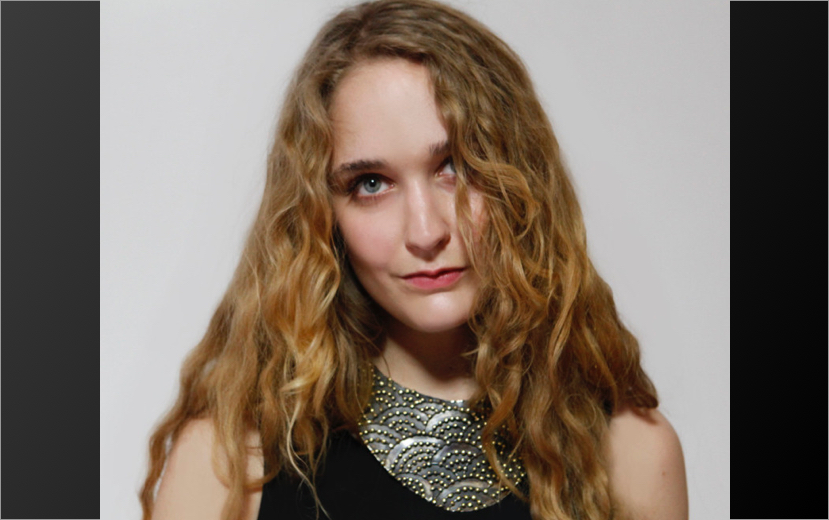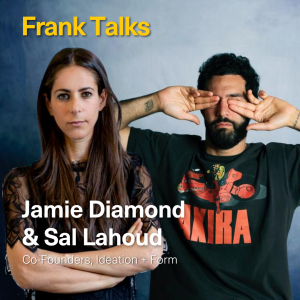Cecelia Lucas Stucker
We are very excited to share this week’s Frank Talk with Cecelia Lucas Stucker, founder and director of both CC: Curating & Collections and the Palmetto Curatorial Exchange. She brings to these enterprises a unique skill set focusing on socio-politically engaged, site specific installations and initiatives which foster networks and dialogues between local communities and the broader international art world.
Her formal training includes double degrees in Studio Art (Painting), Art History, and an interdisciplinary Senior Thesis in Organic Chemistry from the University of South Carolina with additional studies at New York University and The International School of Painting in Umbria Italy. In 2011, Ms. Stucker received a Master of Art Business degree from Sotheby’s Institute of Art in New York.
Cecelia began her curatorial activities while still in college curating group and solo shows of MFA candidates she studied under at USC and in Umbria. While at Sotheby’s, she began curating at galleries in New York and Los Angeles as well as initiating 36 Hours installations at The Armory, Art Basel, and Art Basel Miami Beach through her initiative Artist Accomplices. Since these initial projects, Ms. Stucker has continued to work on exhibitions for galleries and museums internationally – like Bugada Cargnel and Martos – most recently opening untitled 2018 (have til et fugtigt hjerte) at The Herning Museum of Contemporary art with Rirkrit Tiravanija in 2017.
Cecelia completed a curatorial fellowship in 2014 with The African Artists Foundation in Lagos, where she was a curatorial contributor on The Lagos Photo Festival’s Staging Reality, Documenting Fiction. In 2011, she initiated an Art Therapy program for residents of the Bowery Residential Commission Shelter in New York and in 2014 volunteered with The Ford Foundation on YECA creating a pilot arts curriculum for K-12 students in Lagos State. She was on the judges’ panel for ArtFields 2015. Currently, she is a member of La Sierra Artists Residency’s Advisory Committee in Sierra Nevada de Santa Marta region of Colombia as well as co-curating Conservation International’s forthcoming fund-raiser at Christie’s New York in an effort to preserve The Cerro Amay Cloud Forest in Guatemala.
Please enjoy Cecelia’s insight and generosity of information in this week’s Frank Talk!
What was your first job in the Arts?
I assisted my first mentor, the remarkable Harriett Green at the South Carolina Arts Commission. I worked on the State Art Collection: transitioning the archive from files to digital, organizing educational packets for traveling exhibitions, and assisting on the storage and transport of works.
What was the most useful or important thing you learned at that job?
After hiring me, Harriett explained, “please is implied.” Meaning, I work hard, you will do the same, and I’m grateful for you going above and beyond your expected duties. I learned to come to her with solutions to problems in place of questions and to be proactive about my responsibilities so she could focus on her role as the Director of Visual Arts furthering the mission of the collection. She also taught me how to design an exhibition to present the work without distraction creating the most impactful space for your audience to experience the work. I use these lessons to this day.
Tell us a little more about yourself. When did you realize you wanted to pursue a career in this industry?
At six years old, I was engulfed by Monet’s Water Lilies on view at The Art Institute in Chicago. It was my first memory and planted a seed. By my freshman year in undergrad I was majoring in Art History and Studio Art with a focus on Painting. Arriving at The International School of Painting in Umbria, I focused on restoration techniques of rural chapel frescos, and – while studying at New York University through an exchange program – I encountered the Boscoreale: Frescoes from the Villa of P. Fannius Synistor installed at The Metropolitan Museum of Art. I was sold on the magic of art conservation so I petitioned my advisors to approve the hybrid program of study I’d been cultivating and ended my undergraduate degree with an interdisciplinary Senior Thesis in Organic Chemistry. I intended on enrolling at Ecole du Louvre to become an art conservationist.
What do you do now?
I’m researching the next installment of my series Route to (re)settlement – an exhibition of African and African American artists creating site-specific, community engage projects that exam narrative shifts and consider racial constructs embedded in the socio-political systems of post-colonial and post-abolitionist Africa and America. Also finding a new home for untitled 2018 (have til et fugtigt hjerte) – the community garden to table program I developed with Rirkrit Tiravanija and a group of refugees for HEART Museum in Denmark. And taking a summer sabbatical working crew on The Ventura (a gorgeous wooden sailboat docked in lower Manhattan) and hopefully working a farm to table series for Amber Waves Farm in Amagansett.
Where are you from?
South Carolina.
What is the arts community like there?
STELLAR. It is a regional community broken up across cities like Greenville and Clemson in Upstate, Columbia the Capital, with Charleston and Beaufort in the Lowcountry. You won’t find the same collecting class or community of people supporting arts like you would in New York or Paris, but my colleagues running institutions like Columbia Museum of Art, Greenville County Museum, and The Halsey Institute (among many others) are programming intelligent, politically and socially engaged exhibitions of both local and international artists. And the contemporary artists are astounding! People like Michaela Pilar Brown, Fletcher Williams, III, Cedric Umoja, Beth Melton, Damond Howard, Mary Edna Fraser, David Detrich, Nina Garner, Tyrone Jeter, Jill Hooper, and Colin Quashie; I find their work invigorating and an honest extension of their characters and lives which, for me, is the most important quality in an artist’s practice.
Has where you come from shaped what you do in the arts today?
YES! The Southeastern United States’ history is at once devastating and enchanting. And not only are there systemic social patterns derived from this history, but the diverse ecosystems and the architectural landscape offer such a rich tapestry for cultural purveyors to draw upon and create a dialogue about what South Carolina’s past means for its present. It’s with that spirit of curiosity that I have taken up fellowships, exhibitions, and consulting roles with museums, foundations, galleries, and collectors across the globe from Chiang Mai and Khaolak to Lagos, Paris and Tannheim to Basel and London, and the bicoastal art hubs of Los Angeles and New York. My mission has always been to live in these disparate locales and dialogue with new colleagues and communities facilitating an exchange of ideas, practices, and geographies as I nourish these new relationships with future projects around the globe. In 2014, I returned to South Carolina founding the Palmetto Curatorial Exchange in an effort to connect the colleagues I admire back home with those around the world and initiate a worldwide exchange and nurture future generations of the art world.
What is the best piece of advice you can give about working in the art world?
Loving what you do and seeking out colleagues to develop long term relationships centered on learning and growth. Always pushing your practice forward whether you are an artist, curator, collector, writer, or dealer. Also, transparency and a high moral code are paramount to navigating one of the last unregulated marketplaces.
What is one of your greatest accomplishments in your career so far?
Hosting Henry Taylor in residence as he prepared for his Route (to)resettlement installation at the Mann-Simons Site in Columbia, SC in 2016. One of our Palmetto Curatorial Exchange interns, Isaac Udogwu, was assigned to be Henry’s studio assistant for the duration of Henry’s residency and watching Isaac excel in his role and connect with one of his favorite artists was exceedingly special. Not only did Henry gain a new perspective within his practice but the portrait he painted of Isaac went from his installation in the Mann-Simons exhibition to the lead image of The New York Times November 17, 2016 announcement of participating artists in the 2017 Whitney Biennial. Watching Isaac savor this experience and watching Henry’ installation live beyond our regional arts organization and community made me proud.
What has been a challenge for you?
Negotiating the paradigm shift of patronage versus investment in the art world. And advocating for artists and the communities they engage with to present practical, impactful installations that go beyond the standard assembly line of production for art fairs and solo shows geared towards pleasing the market and satisfying the wait list of collectors.
What is something you do every day at work?
Read. Look. Inquire. Listen. Then bust my buns to translate artists’ visions into reality in an intensely collaborative process.
What is one of the weirdest things you have had to do on the job in your career?
Learn the importance of soil pH balance and the affect that a salty sea breeze originating from 65 kilometers away can have on fruit trees – this in my research for untitled 2018 (have til et fugtigt hjerte). But I have to say, it stuck, because sustainable nutrition and food culture as a platform to discuss social constructs and the inequalities that stem from them is now at the core of my curatorial focus.
What defines a good employee? What defines a good boss?
Dedication, open dialogue, and being a self-starter. Knowing your strengths and weaknesses and harnessing both. Same goes for a good boss, plus being able to efficiently delegate.
What do you think makes a person hirable?
Passion. Being prompt, if not early. And not being terrified to pick up the phone to get something done.
What is your advice to making yourself stand out in your workplace?
Going above and beyond one’s responsibilities and being a team player.
What are things you can do proactively boost your CV?
Demonstrate your strengths succinctly; exhibit a range of skills you progressively cultivate through professional positions, studies, and volunteer roles; and show your commitment to your community participating on panels, committees, and fund raisers.
Are there any tips you can give people entering the workforce?
Be present. Be proactive. The more you show up for openings, art fairs, studio visits, and demonstrate you’re engaged, the more familiar your future colleagues become with you and the more opportunities to forge strong relationships. Also, there is no replacement for seeing art in person. While social media and online platforms like Instagram, Paddle 8, and publications like Art Forum or The Times provide useful perspectives and information, these are just tools to further the scope of your knowledge.
What is the best exhibition you have seen in the last year?
Last summer in Copenhagen, Ai Wei Wei installed Soleil Levant in the windows of Kunsthal Charlottenborg. The commentary about Europe’s refugee crises clearly stems from his standard practice of political commentary, but the work was a wonderful blending of historical cannon. The 3,500 life jackets salvaged from incoming refugees at Lesbos managed a dialogue with Claude Monet’s painting Impression, Soleil Levant from 1872 (depicting the harbour in Le Havre at the end of the 1870-71 Franco-Prussian war) fully expanding on his predecessor’s snapshot of the socio-political realty of industrialization to create a mesmerizing commentary about the plight of refugees today. Not only one of my favorite exhibitions of the last year, but a top ten piece.
If you could own a work by 5 different artists, who would be in your collection?
Just five? I guess I’ll go with the established list… Pierre Huyghe, Joseph Beuys, David Hammons, Rashid Johnson, Félix Edouard Vallotton, Wayne Thiebaud. Sorry, that’s six!




